Basilicata, formerly known as Lucania, persists as one of the lesser known Italian regions. For the visitor, this is an advantage: it’s cheaper, there are less tourists, the people are friendlier. You have everything in this region: mountains, countryside, historic cities, archeological sites, palazzos, forests, two coasts – the white sandy beach facing the Ionian Sea versus the rocky Tyrrhenian Sea, and great food and wine.
In terms of culture, there are Greek, Enotrian, Lucanian and Roman influences. The Ionian Sea, on the uppermost ‘arch’ of the Italian boot instep, faces towards Greece. There are still traces of Greek culture in Basilicata, for instance, another word for elephant in Italy is ‘Lucanian cow’ derived from early Greek invaders.
An A to Z of typical foods in Basilicata
Aglianico wine: this grape was originally from Greece and one of the oldest grapes. I love it – full bodied and tannin red wine, perfect with a tomato sauce. Here is a local white wine made from Greco and Fiano grapes.
Aubergine ‘melanzane rosso di Rotunda’: these bright red eggplants look more like tomatoes or peppers but unfortunately I didn’t get a chance to taste them. No time to visit a street market! Locals in Maratea claim that red aubergines originated in Africa, were taken to Brazil and then Italy where it was known as the bitter apple. They grow nowhere else.
The more familiar aubergines originally came from India, where they grew (grow?) wild. The red aubergine is more bitter than purple or white eggplant. (Modern cultivars of eggplants tend to have the bitterness bred out of them, hence we no longer need to salt them before cooking.)
Baked Ferrandina olives: dark, fudgy, liquorice and salty. Lovely in an orange salad.
Bitters: not only the obvious and well known tangerine-coloured bitters such as Aperol Spritz and Campari but non-alcoholic clear bitters in tiny glass bottles. When it’s hot, you want something refreshing, not sweet.
Caciocavallo cheese: is an udder shaped sheep or cow cheese. It has a similar flavour to mozzarella but is denser and longer lasting.
Candonga strawberry: large, juicy and red with lots of flavour. They are in season from February to June, so available earlier than British strawberries.
Cardoncelli mushrooms or King Oyster mushrooms often served as ‘trifolati’ with garlic, chilli and parsley. They parasitically grow on the cardoon root, rather like the Mexican fungus huitlacoche grows on corn.
Chiacchiere, a kind of thin fritter drizzled with honey, made from fried fresh pasta dough. We were served these in the mountain village of Castelmezzano with an intensely bitter liqueur.
Chickpeas ‘ceci neri’, also a speciality in Calabria and Puglia. These small black chickpeas, grown organically, are becoming fashionable again after years of being considered poor people’s food. This blog suggests soaking them for 48 hours and combining them with fresh ‘langana’ pasta.
Coratina olives: between black and green, speckled like pebbles.
Crapiata: a Roman era soup made from legumes and cereals. There is a special festival to celebrate this soup on the 31st of August and 1st of September, where each family contribute some cereals and beans to the pot. Traditionally the old harvest is boiled up in a huge community copper cauldron. The old harvest is used up to make way for the new harvest.
‘Cruschi’ peppers. Basilicatans are obsessed with local ‘cruschi’ peppers which are non-spicy. They are crumbled on fish or frittata; mixed with breadcrumbs and scattered on pasta. Usually fried and crispy, but be careful when frying, as they easily burn and turn bitter.
Foccaccia: this looks more like pizza and is served for breakfast. I’m actually salivating as I write this.
Sarconi beans: some foods, such as wine grapes and these white beans, thrive in difficult conditions and poor soil. These white beans are sweet, soft, digestible and cook quickly. Great in minestrone, with pasta and risotto.
Matera bread: when I first saw it in the bread basket, I thought it was brioche because of the eggy colour. This bread is very distinctive, made from yellow, hard durum wheat and with a grape sourdough mother. The original loaves were large so they didn’t dry out. Each family stamped the bread with their own mark. Shepherds, who lived outside for days, carried this long life bread and cheese.
Pasta: tends to be hand-made rather than dried. Popular shapes include orecchieti (also popular in Puglia) and cavatelloni which, especially mixed with cime de rapa, look like green pea pods. I agree with Jacob Kenedy in The Geometry of Pasta that these pastas are better fresh than dried.
Ricotta: the fresh cheese is everywhere, both in savouries and desserts. I had a strawberry ricotta dessert which was like a granular blancmange, which I wasn’t too keen on.
Rye flour is popular for baking, for savoury ‘cannolo’ stuffed with ricotta and anchovies, and crostata di pere, a pear cake.
The places I visited in Basilicata:
Matera, European Capital of Culture 2019, is a Swiss cheese of a city. Our guide referred to it as negative architecture, where structures aren’t so much built as excavated. Made from porous chalky limestone, people have been living here since neolithic times, in a district of the city called ‘Sassi’. Much of the city is underground, with 150 rupestrian or ‘rock’ churches.
Standing at the edge of the town looking at the ravine and the hillsides opposite, pockmarked with caves, I could see why the first Italians inhabited the region 10,000 years ago.
I stayed in the Hotel Sassi, sprawled on several levels up and down the steep hillside, looking over the old town. Although my rockbound room smelt of damp cave, the view at night was incredible, glowing yellow lights from a honeycomb of windows and doorways carved out of rock. A beautiful, rustic but more expensive hotel is the Corte San Pietro, with eight underground cisterns. The elegant owner gifted me a terracotta tube, used for ceilings, just because I mentioned that I liked them. As I said previously, people from Basilicata are generous and hospitable.
After World War 2, Matera became infamous as the national city of ‘shame’. People were living in squalor, literally in caves, without plumbing. The government bought 80% of the town and moved the inhabitants to social housing in the surrounding area, and Sassi was abandoned to a few squatters. Today it’s the pride of Italy. People have moved back; there are now around 60,000 residents. Parts of the town continue to be renovated; the ‘sassi’ district has strict rules: all doors must be painted dark green, brown or white, to preserve a uniform look.
Bernalda, 20 miles away, is the family home of Francis Ford Coppola, where his grandparents originate. The director is desperate to have tourists discover Basilicata and has restored the Palazzo Margherita. This is a sumptuously tasteful and stylish five star hotel, restaurant and cooking school. Upstairs there is a screening room with Coppola’s hand-picked list of 100 films, ranging from Pasolini and Rossellini to Shrek. The Italianate gardens are exquisite: geometric topiaries, lemon, citron and palm trees, stone fountains, tall hedges of fragrant fake jasmine, a black-bottomed swimming pool .
‘Mr. Francis thought a turquoise swimming pool is so ordinary’.
Sometimes they host candlelit outdoor meals in the gardens, often a barbecued spaghetti dish called ‘spaghettata’. His daughter, the film director Sofia Coppola, had her wedding here. It’s not cheap, rooms range from £250 a night to £1500 a suite. But there is a reasonably priced bar, Cinecitta, open to the public, adorned with signed black and white photographs of Italian and American film stars and a vintage jukebox.
The nearby seaside resort, Metaponto, has pale sandy beaches. But the most interesting thing is the archeological museum and the ruins such as the Palatine Table dating from 600 BC. You can easily see the Greek Doric influence. The area was a malarial swamp for centuries, between the Greek occupation and until post World War 2. Historians are still trying to discover how the ancient Greeks knew how to drain the swamps.
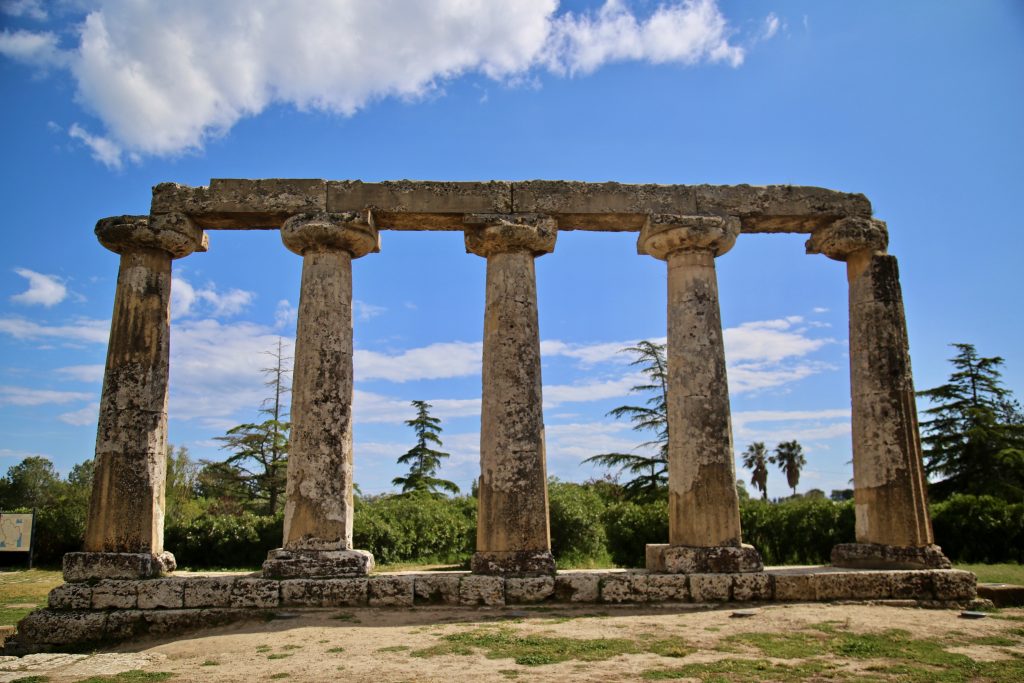
Castelmezzano and Pietrapertosa
Thevillages above are carved out of the Lucanian Dolomite mountain range. At the end of the second day, the mini bus edged slowly down very steep and narrow roads to a mountain side village called Castelmezzano. The air was crisp and fresh with the scent of burning log fires. It reminded me of Nepalese villages in the Himalayas. In winter the villagers are sometimes cut off by snow, therefore a culinary culture of canning or bottling vegetables and fruit is important in the village. The population is rather old but a few young people are staying, now that there is tourism. I walked to the top of the fortress village to a rock with carved steps, hacked into by the Normans. Imagine perching on a smooth mountain side and doing this.
The village didn’t used to have a hotel but now there are dozens of bed and breakfasts, often consisting of only one room. Everyone in our group was taken to a different place. I was lodged at the top of the village in a place with a wooden sink (I made my young female guide carry my suitcase, ruthless but necessary). I kept the windows open all night, just to get some more lungfuls of that intoxicating air. When you live in a city like London, it’s the height of luxury just to breath clean air. My breakfast was picked up at the local bakery – an entire fruit tart.
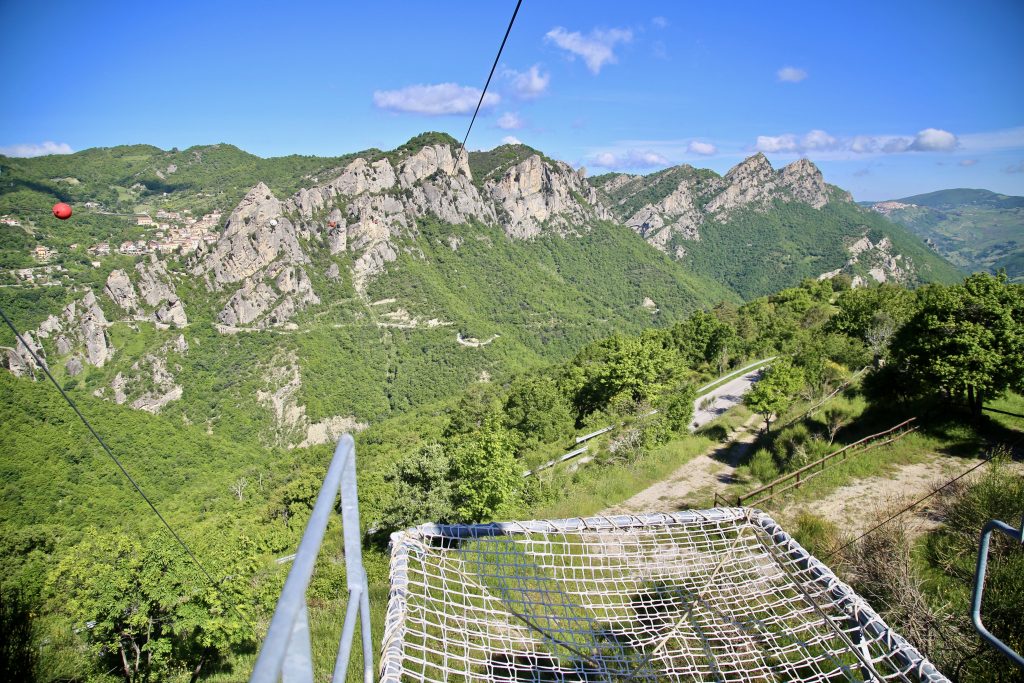
See that mountain over there? I zipwired from there.
I’d agreed to go on a zip wire called The Angel flight because I have a policy of saying yes to everything. I’m not letting my complete lack of fitness prevent me from trying new things. But I’ll be frank, I was shitting myself. After a dangerously bumpy ride in an overcrowded buggy to the top, I was horizontally strapped in a kind of straightjacket. I was going to travel, like a podgy human bullet, from one mountain to another at a speed of 120kph, at a height of 400m, for one kilometre.
And you know what, it was ok. Once you are flying, it’s not even scary. The most frightening thing was landing, where two men, somewhat casually, catch you after you spring back like a bungee. I’m not sure what would have happened if they hadn’t been there.
But do go on it. It’s exhilarating. Cost: 40 euros.
Pietrapertosa,at an altitude of 1000 metres, is the slightly larger twin of Castelmezzano, and considered one of the most beautiful villages in Italy. At the top is a Saracen castle with dramatic views of the jagged dolomites and green fertile valleys. The photographer Henri Cartier Bresson spent time photographing the old people of the village and large black and white photos are displayed in the open air. Pietrapertosa boasts some of the oldest people in Italy. I can understand that, I felt healthier just being there. That mountain air!
Vaglio, near Potenza.
I stopped for lunch at La dimora Dei Cavalieri, an ‘agriturismo’, or farm stay. This was probably the best food I ate in Italy. It reflected my view that the best food is rustic, home-made, home-grown and made by women. We had a dish of the freshest ricotta; kitchen-made, milky, fragile. We continued with plate after plate of so many things: frittata, sourdough focaccia, blooming fritters with fresh tomatoes, a hearty fresh pasta with beans ‘lagane e ceci’, a feathery spelt pear crostata (which I’ve attempted to reproduce in the recipe below.) Virtually everything was grown on the farm.
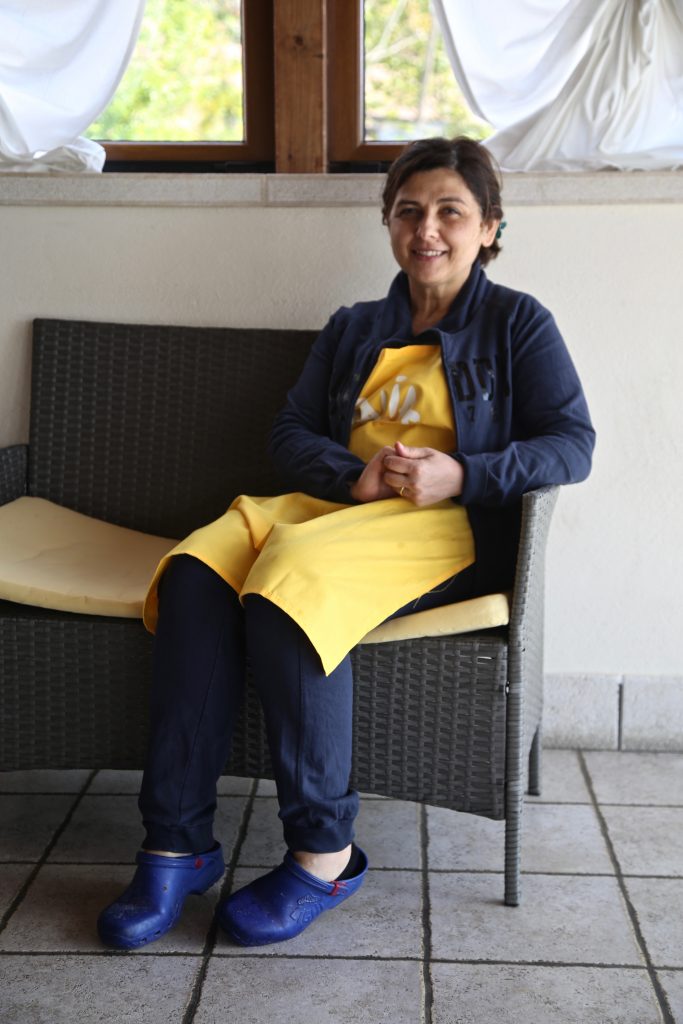
Chef Rosaria 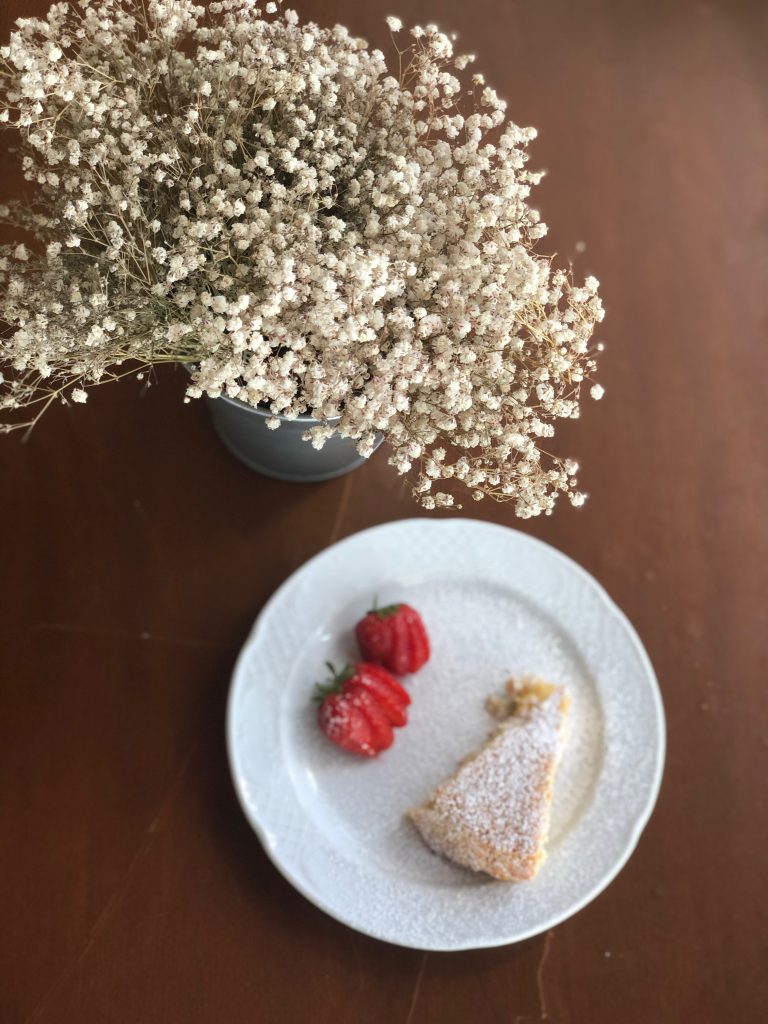
Crostata di Pere, with Candonga strawberry
Maratea
Maratea is sometimes known as the town of the 44 churches. I gazed down at the town from the enormous hillside statue of a youthful Christ the Redeemer, similar to that in Rio de Janeiro, arms spread, facing inland, wild fennel curling about his ankles. Maratea, somewhat depressingly, spends three months in shadow from mid November to mid February when there are only around 200 residents. During the summer, the population expands to between 5000 and 25,000 people including tourists.
I dropped into a restaurant and bar, Lucania Botteghe, next to the Jesus statue. The chef and owner are doing something brave by offering typical Basilicata food, changing with the seasons, rather than the usual tourist trap grub. “I’m probably making a very bad commercial decision” sighed the owner “but I want people to know our cuisine”. He showed me a bottle of Crithmum, a samphire liqueur, something I’ve never come across. “We made this and are now selling it in fashionable bars in Rome”.
Archeological excavations of clay amphorae in Maratea and the nearby island Santo Janni, prove that the area was a manufacturing base for the Roman fish sauce ‘garum’ which is a intense umami addition to any dish.
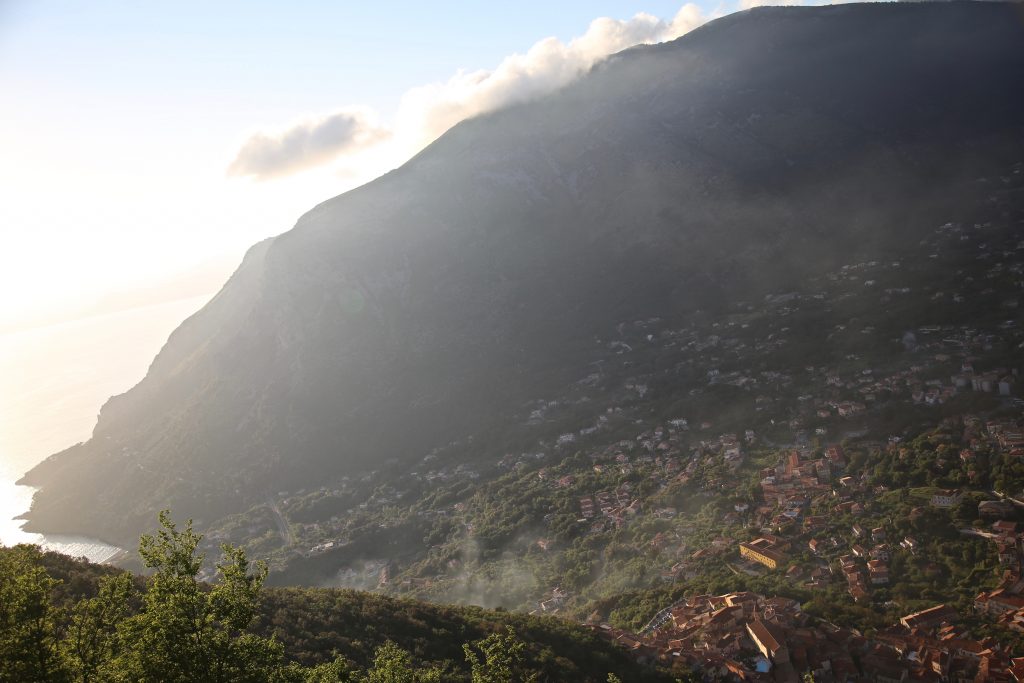
Our guide, curly haired like a Roman statue, with the splendid name ‘Pompeo’, was by trade an archeologist. I was with a group of female journalists; imagine our frustration when we saw there were streets of vintage wooden-fronted shops selling linens or the Pasticceria Panza and their Nutella pastries ‘bocconotto’ in the centre of Maratea. We didn’t get a chance to go shopping.
“Next time: less rocks, more shops” I muttered.
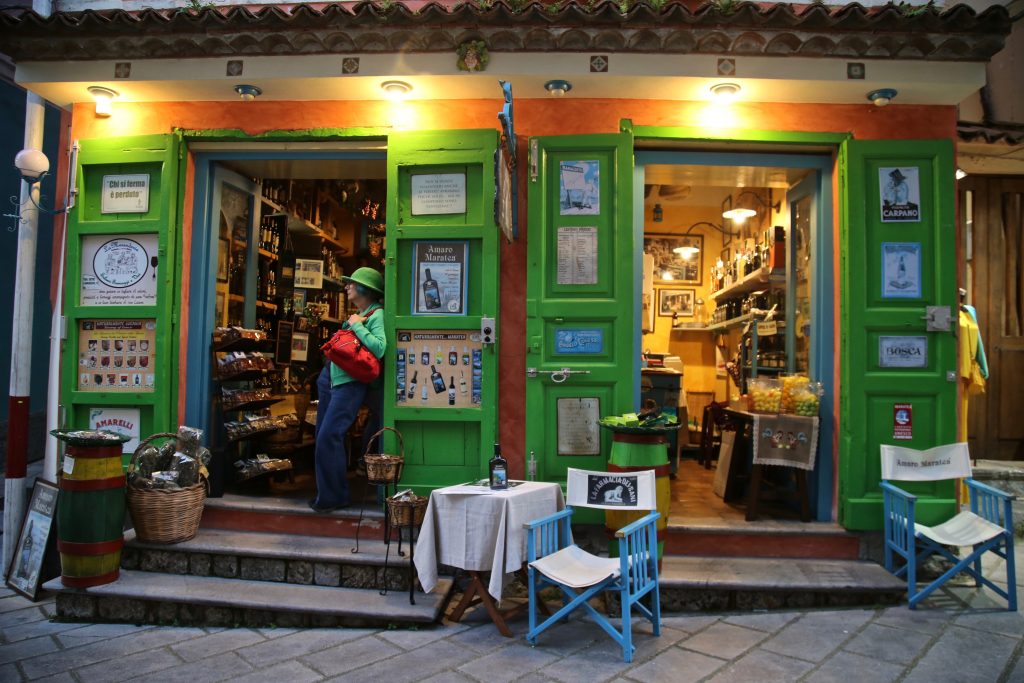
Pear Crostata di Rosaria y Maria
Ingredients
- 150 g butter, I use salted
- 120 g sugar, light brown
- 1 egg
- 1 egg white
- 300 g finely ground spelt flour
- 1 tsp baking powder
- Pinch salt
For the filling
- 1 or 2 large pears, sliced, poached (I poached in cider) or use tinned pears
- 50 g Pear jam
To sprinkle on top
- 2 or 3 tbsp Icing sugar or vanilla sugar
Instructions
- Beat together the butter and sugar until fluffy.
- Add the eggs then flour, baking powder and salt, pulling together a rough dough. Divide into two circles.
- Preheat the oven to 180ºc.
- Roll out the pastry into two thick circles between 22cm and 24cm.
- Spread a layer of pear jam on the bottom circle.
- Arrange the thinly sliced soft pear slices on top of the jam.
- Place the second circle on top.
- Bake for 30 minutes at 180ºc.
- Serve luke warm or cold with creme fraiche.
Notes
This trip was courtesy of Basilicata tourism. I only wish I could have spent more time there.

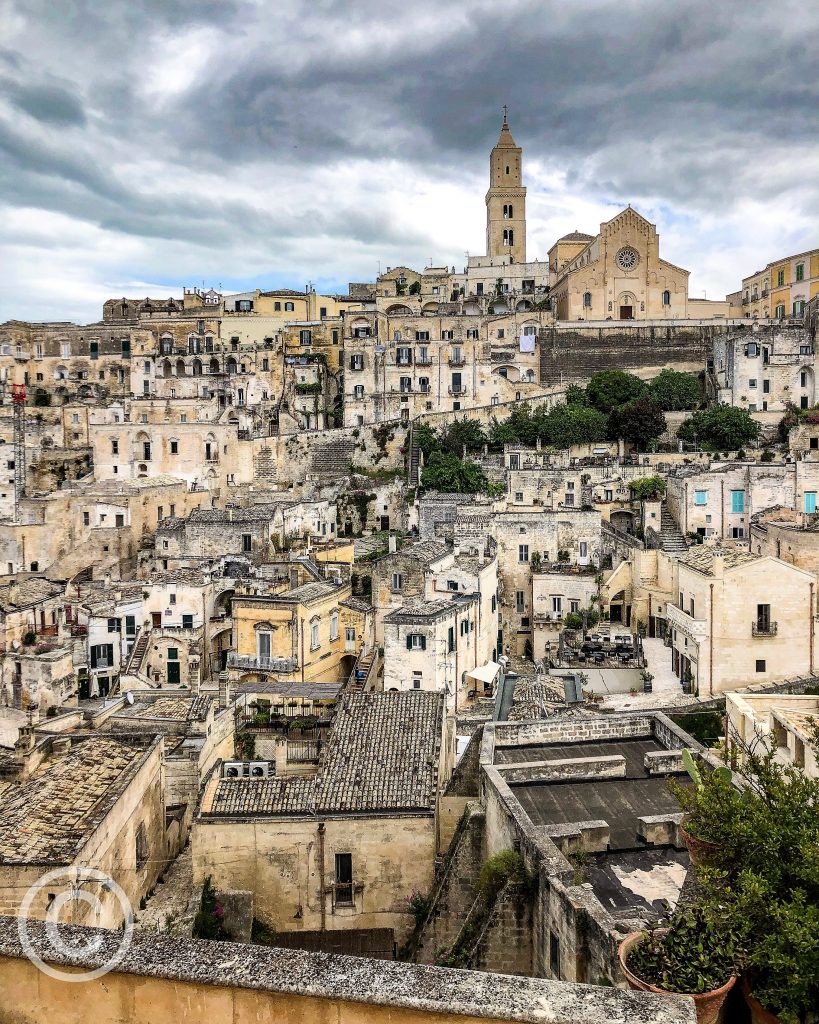
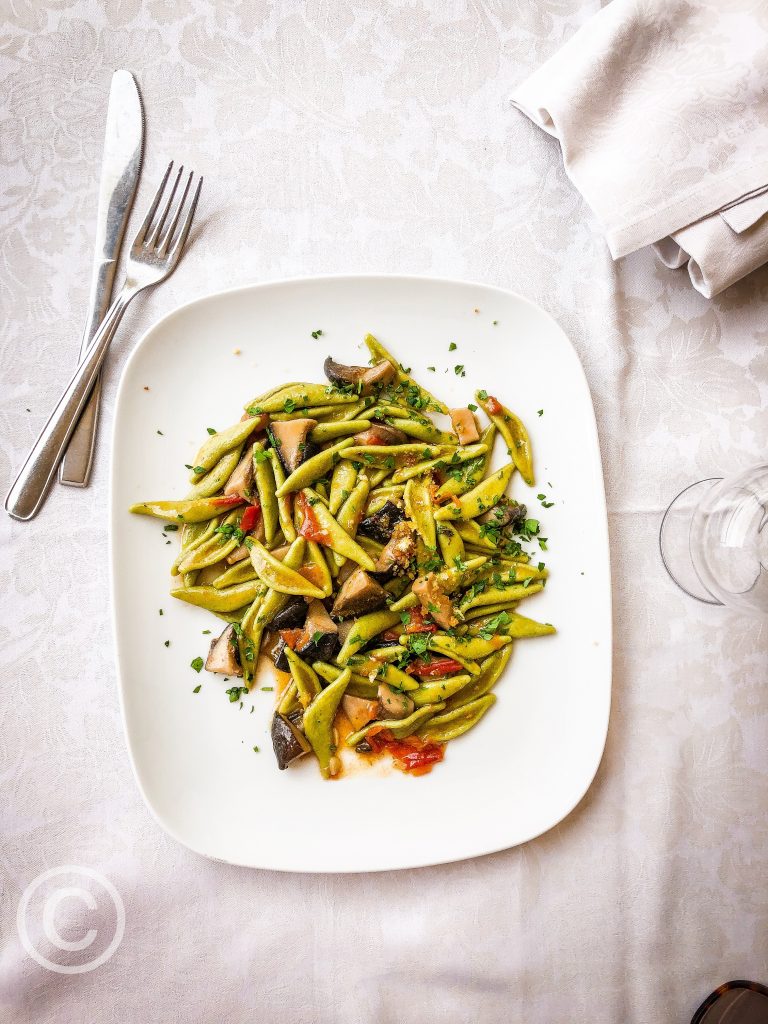
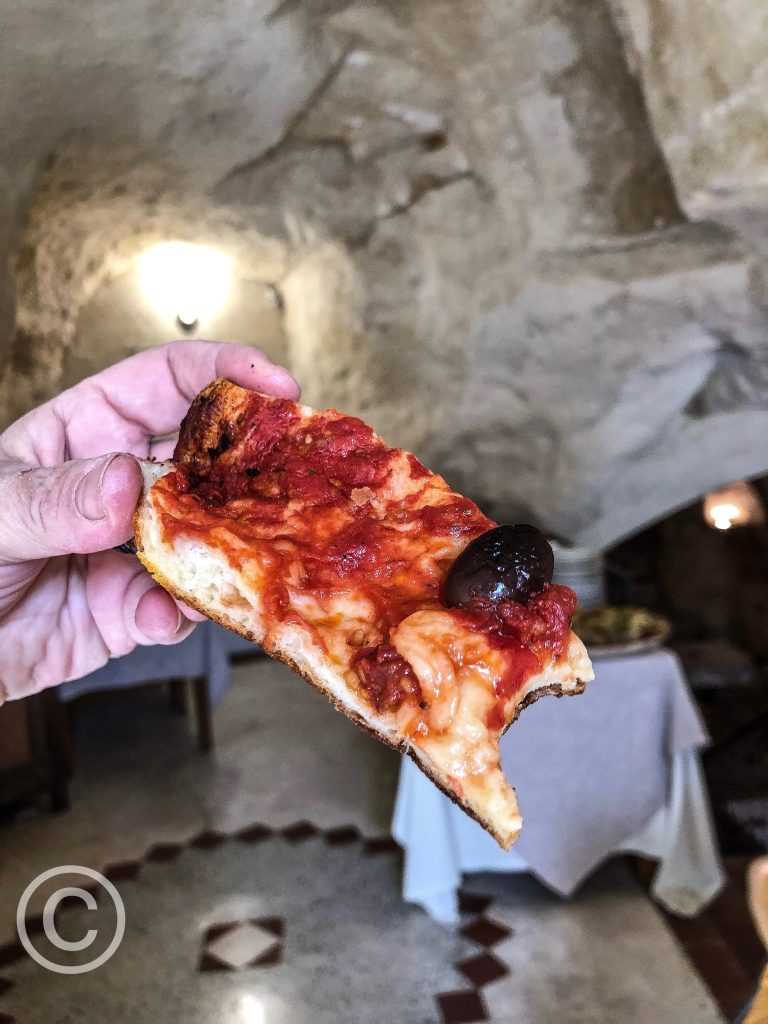
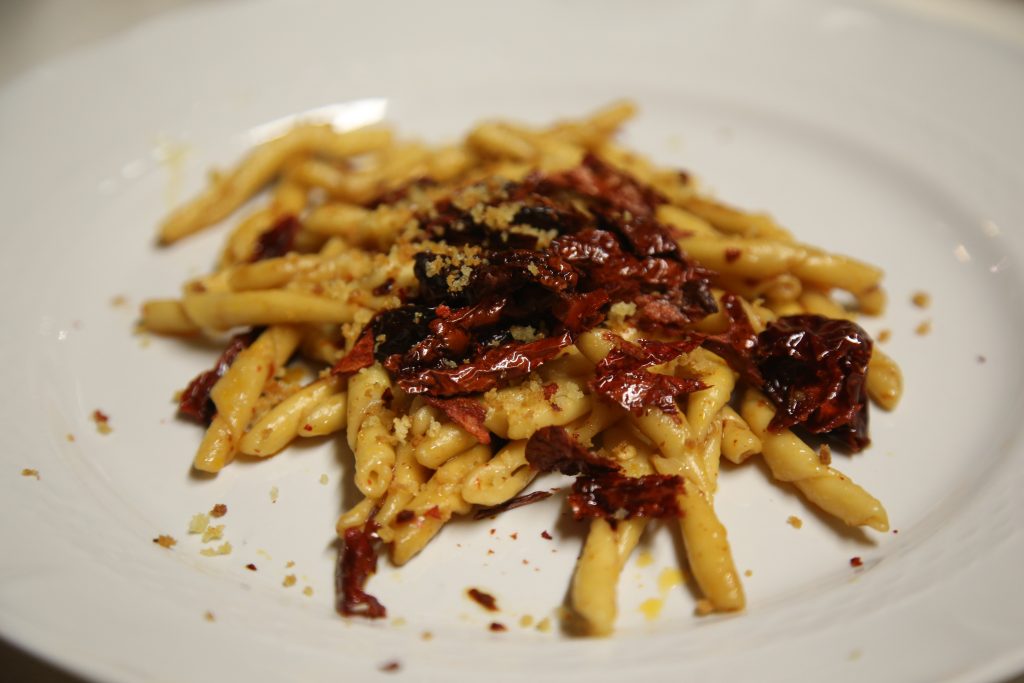
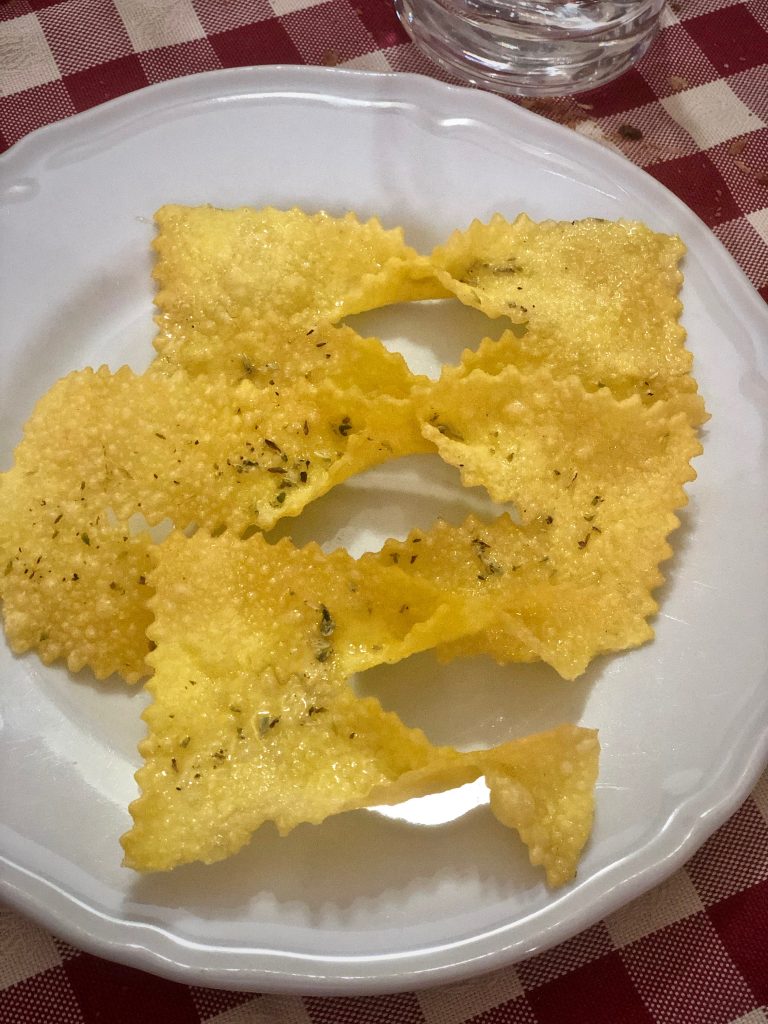
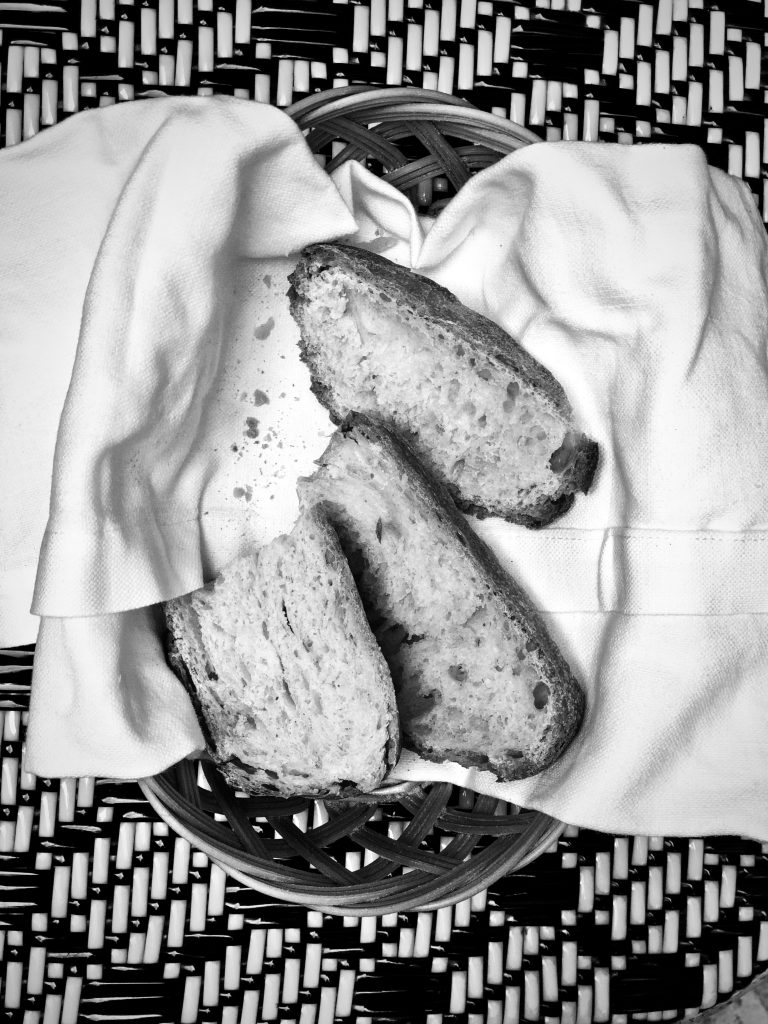

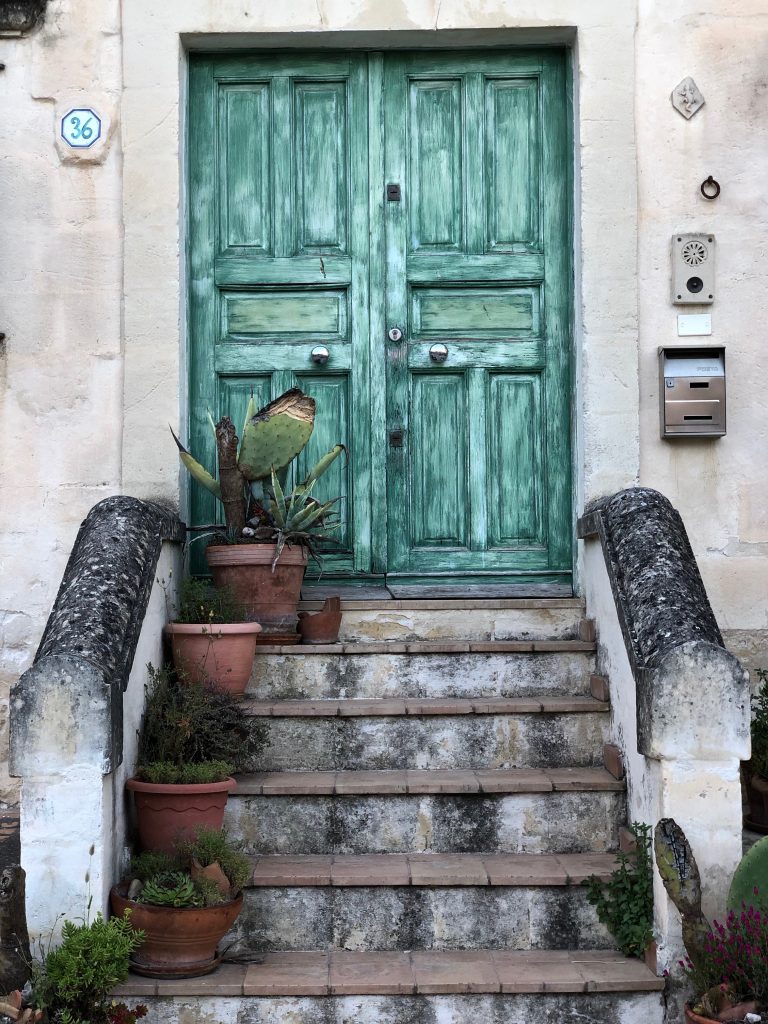
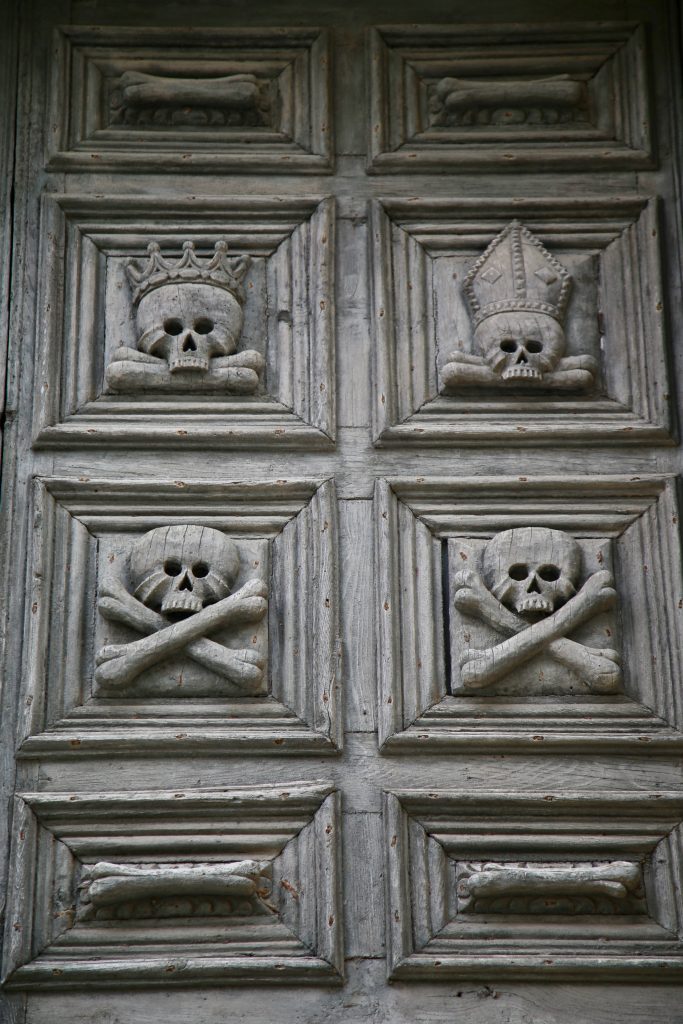
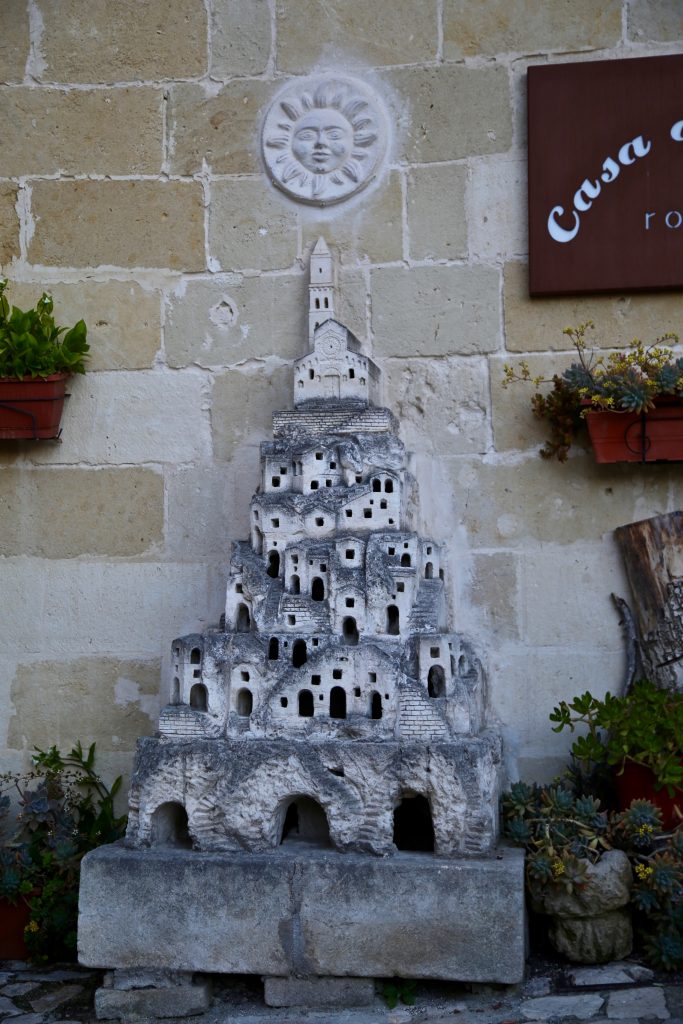
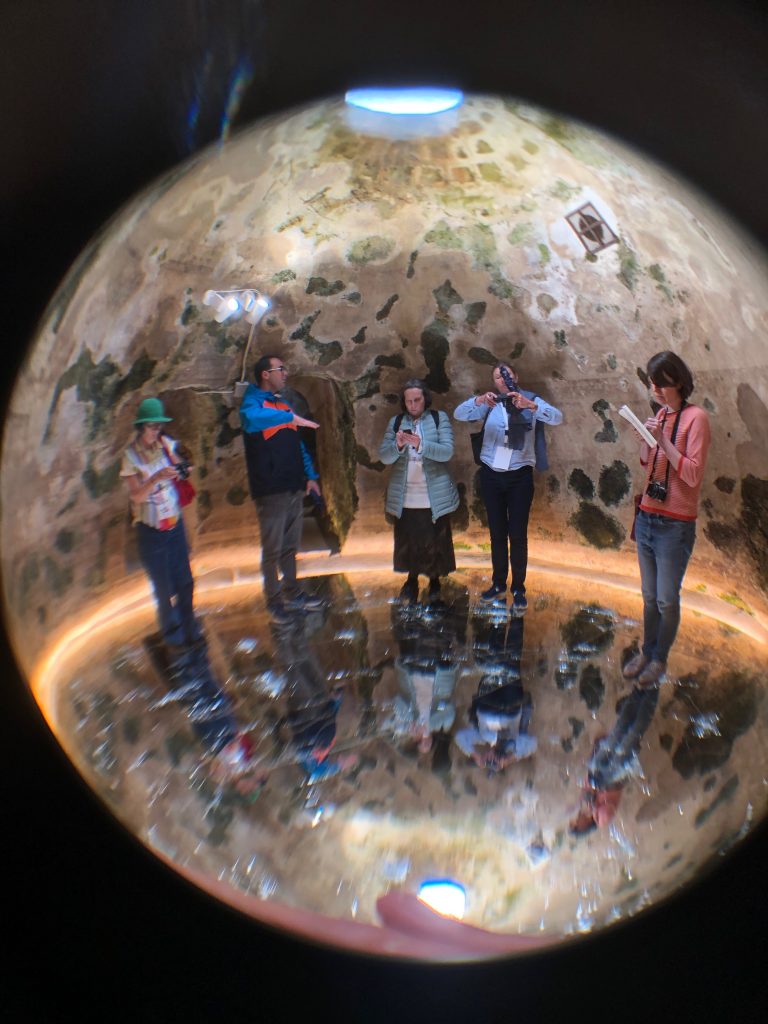
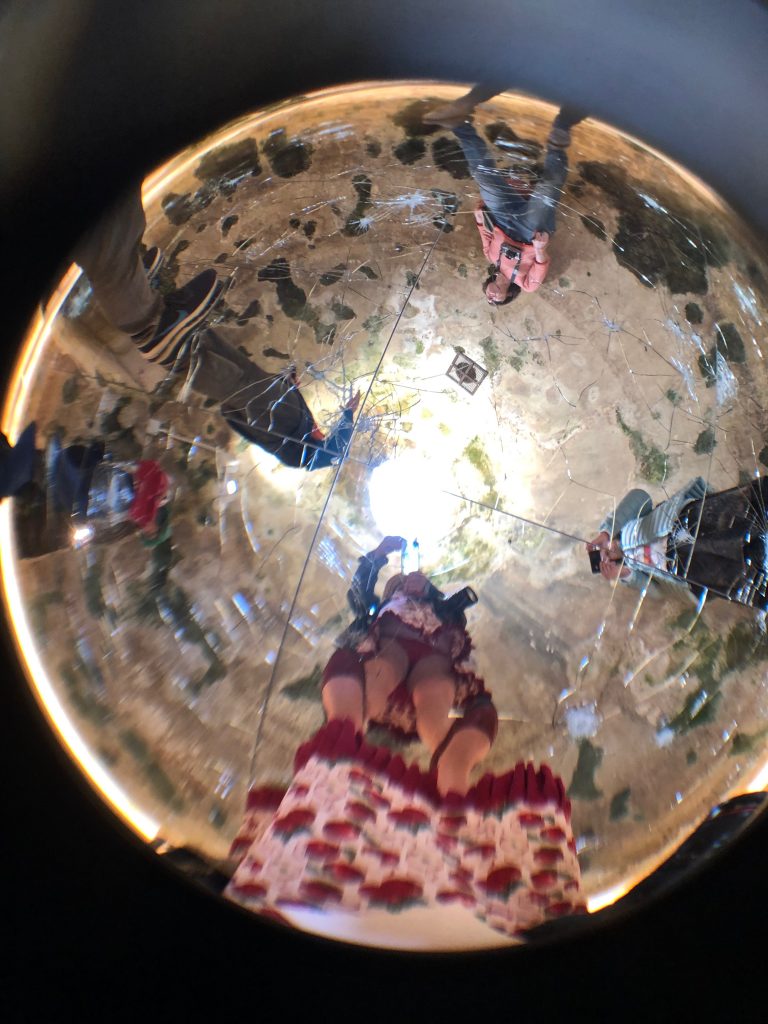

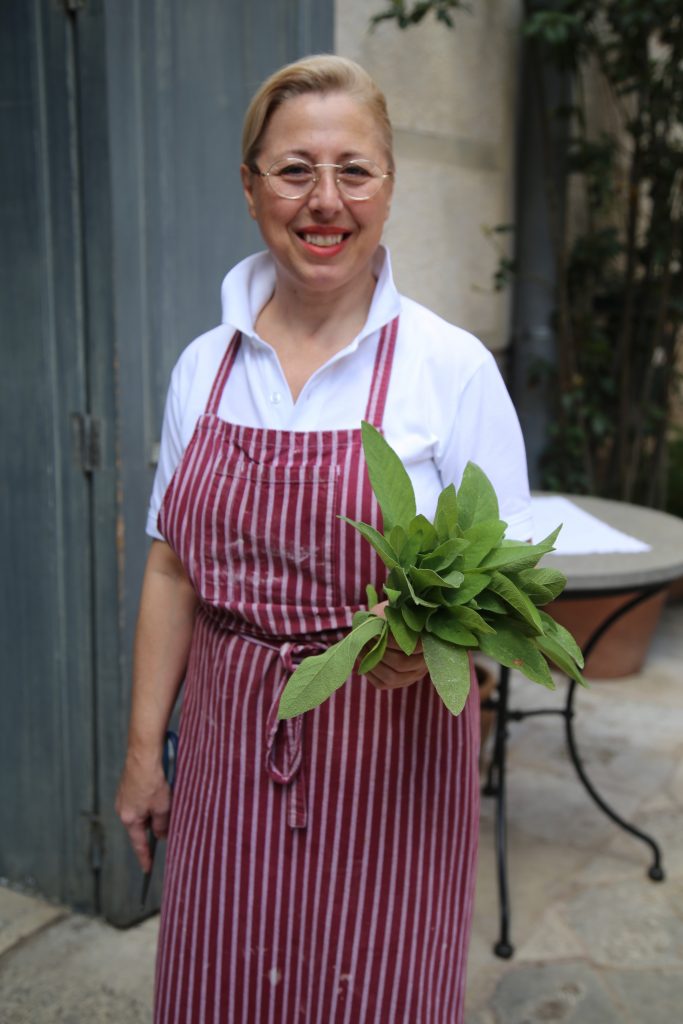
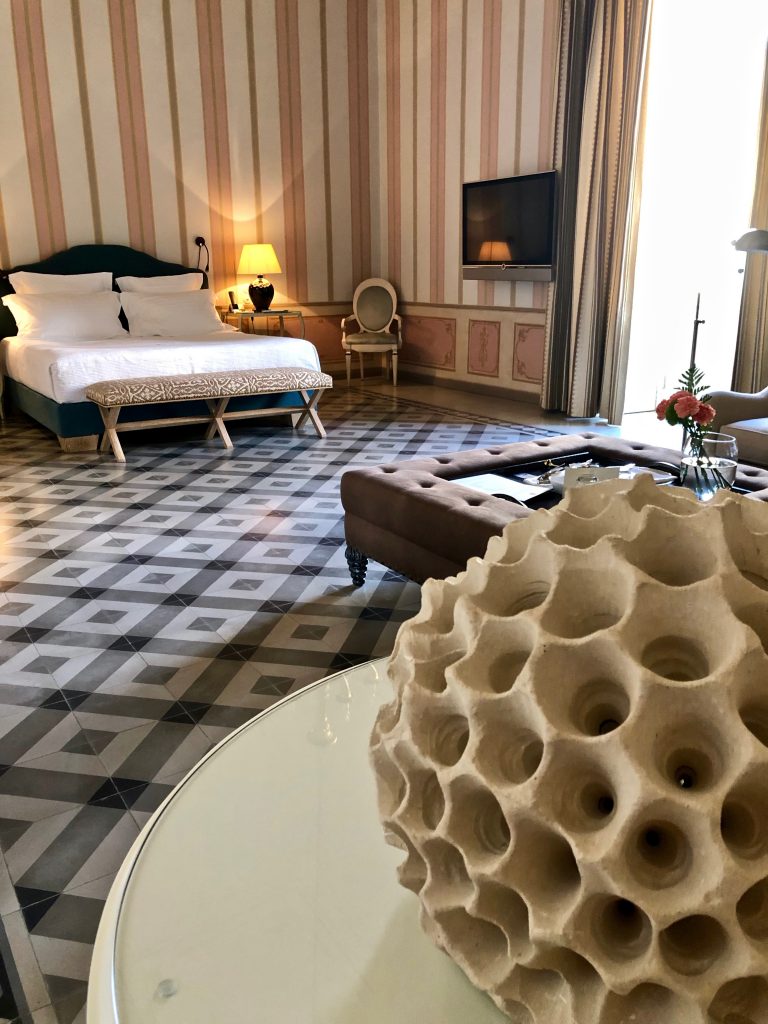
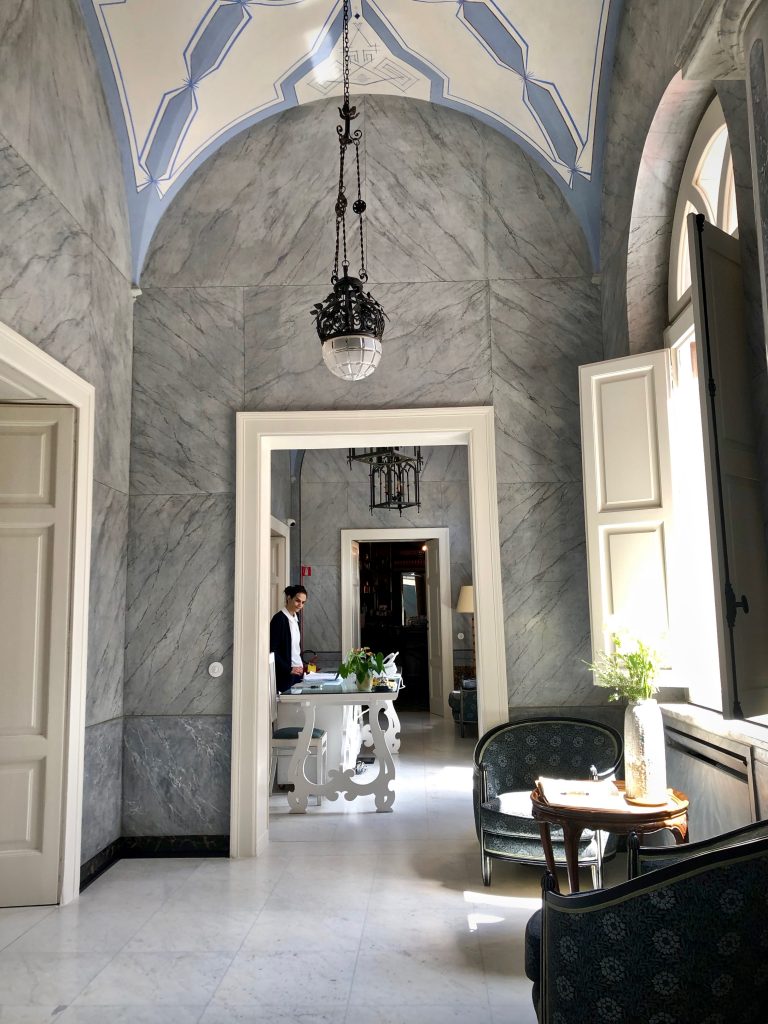

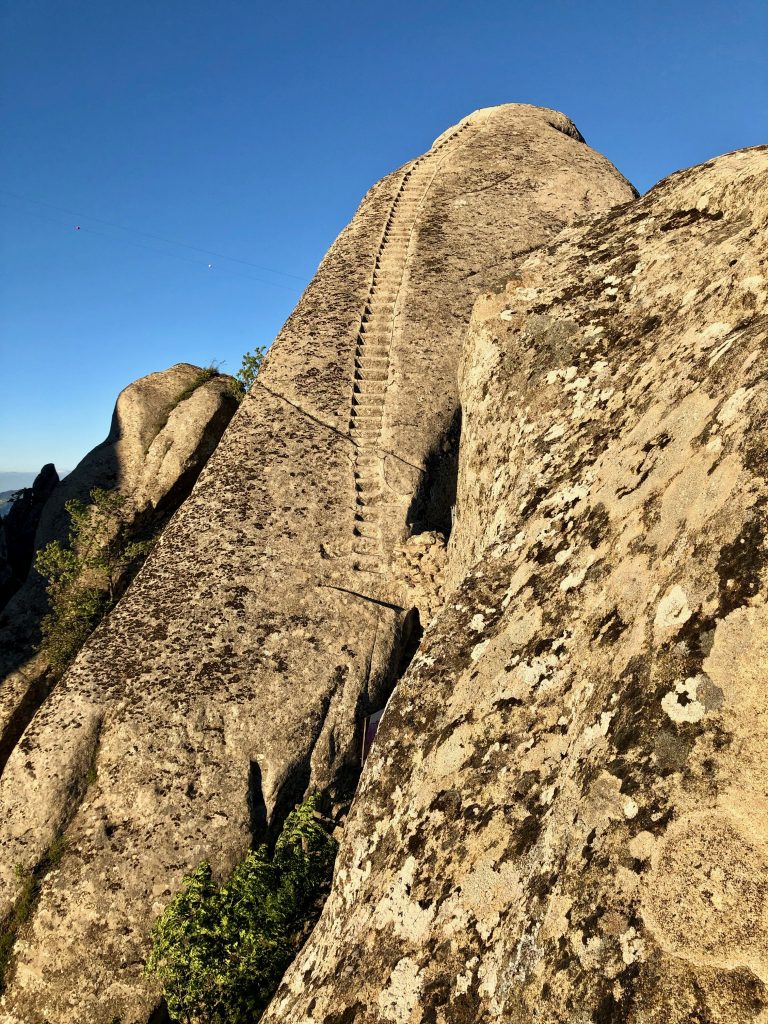
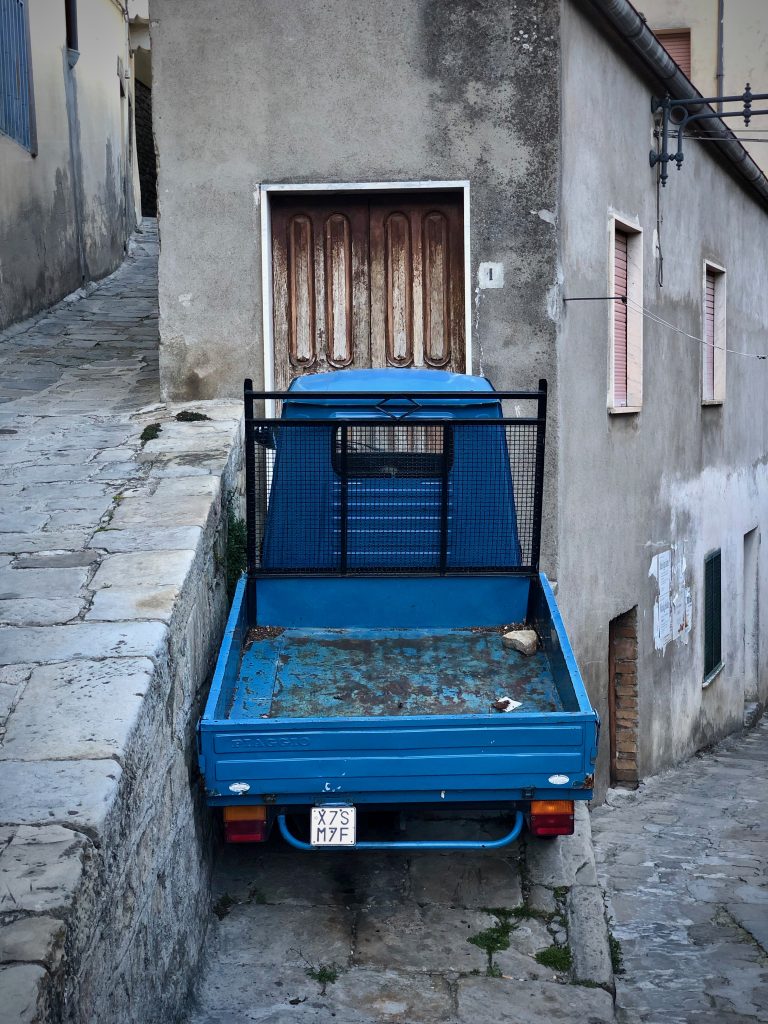
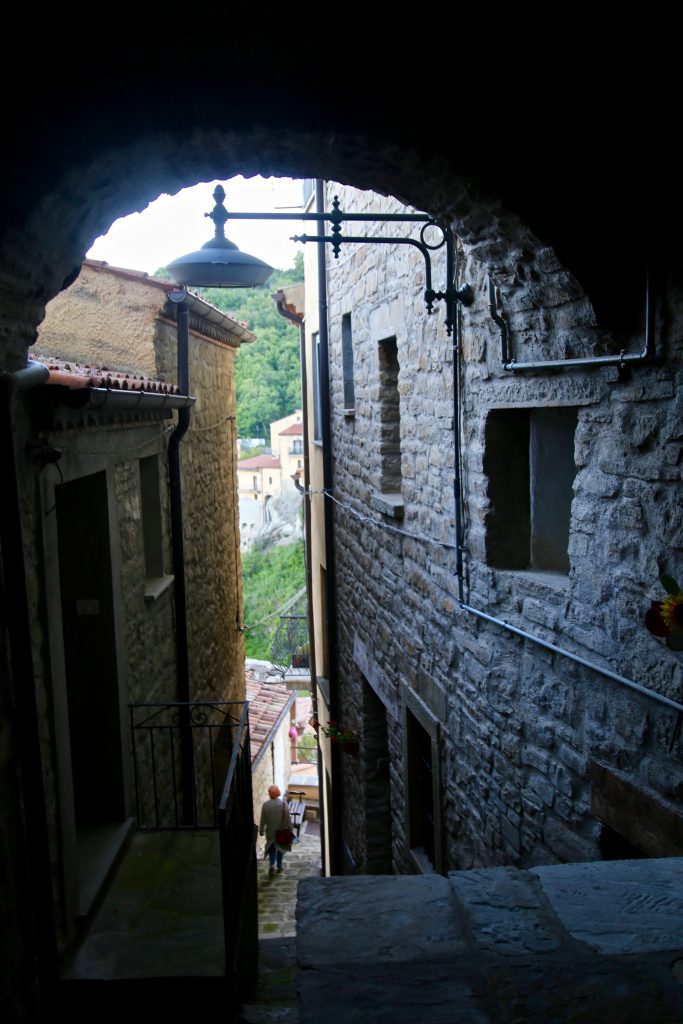
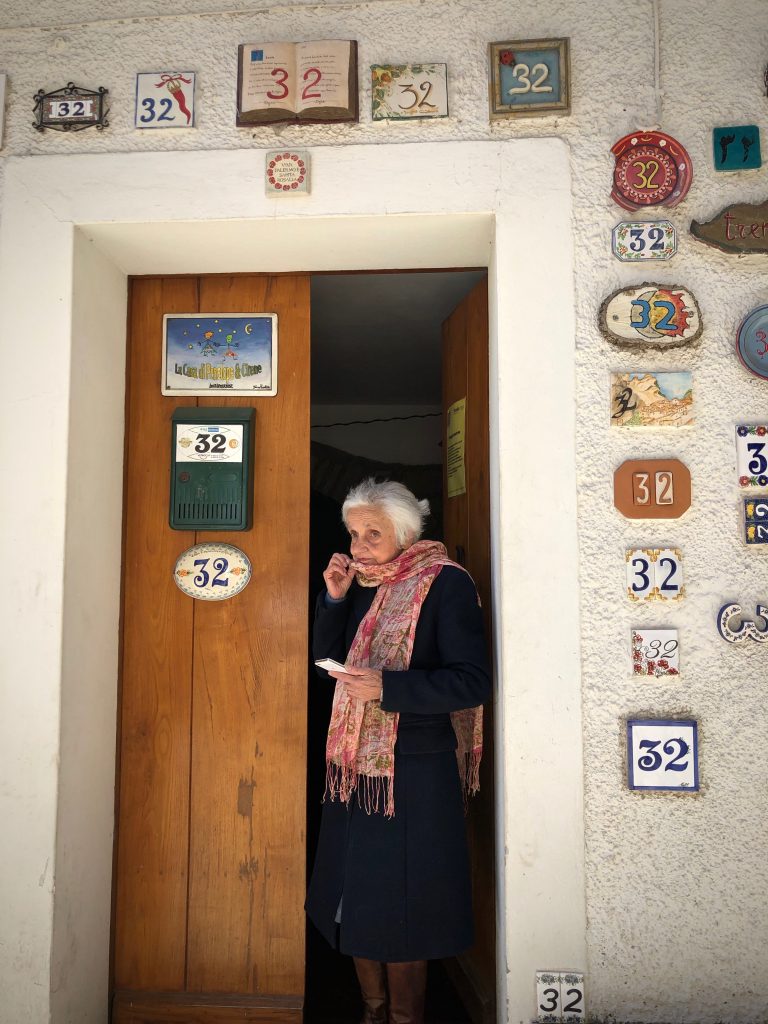
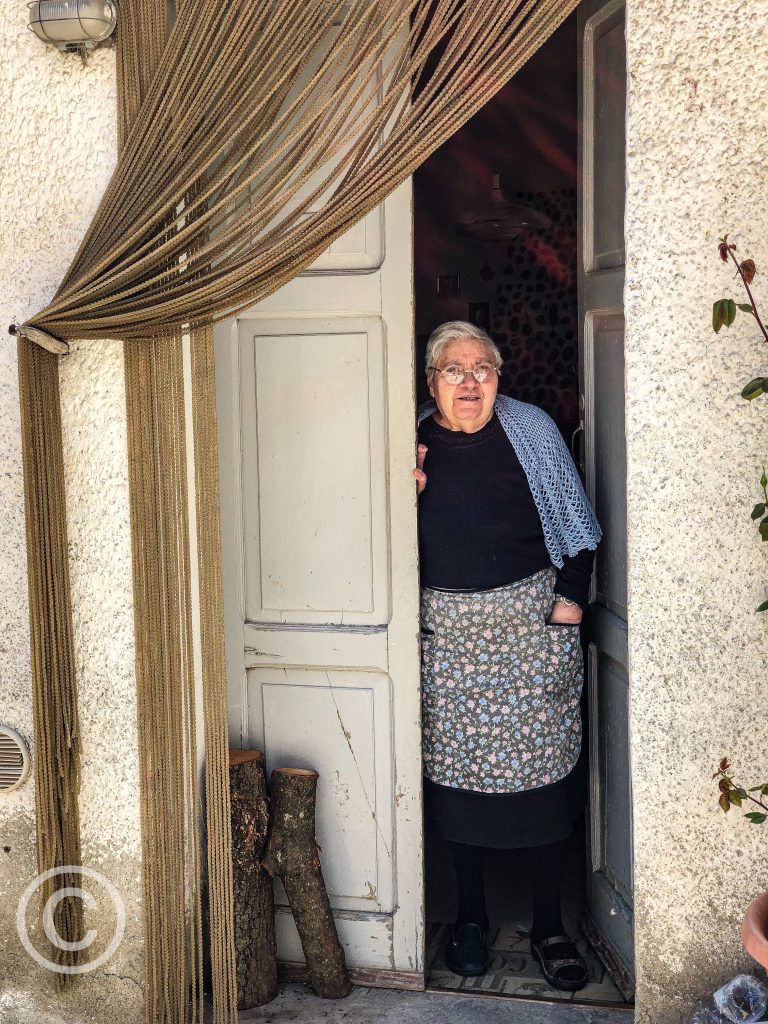
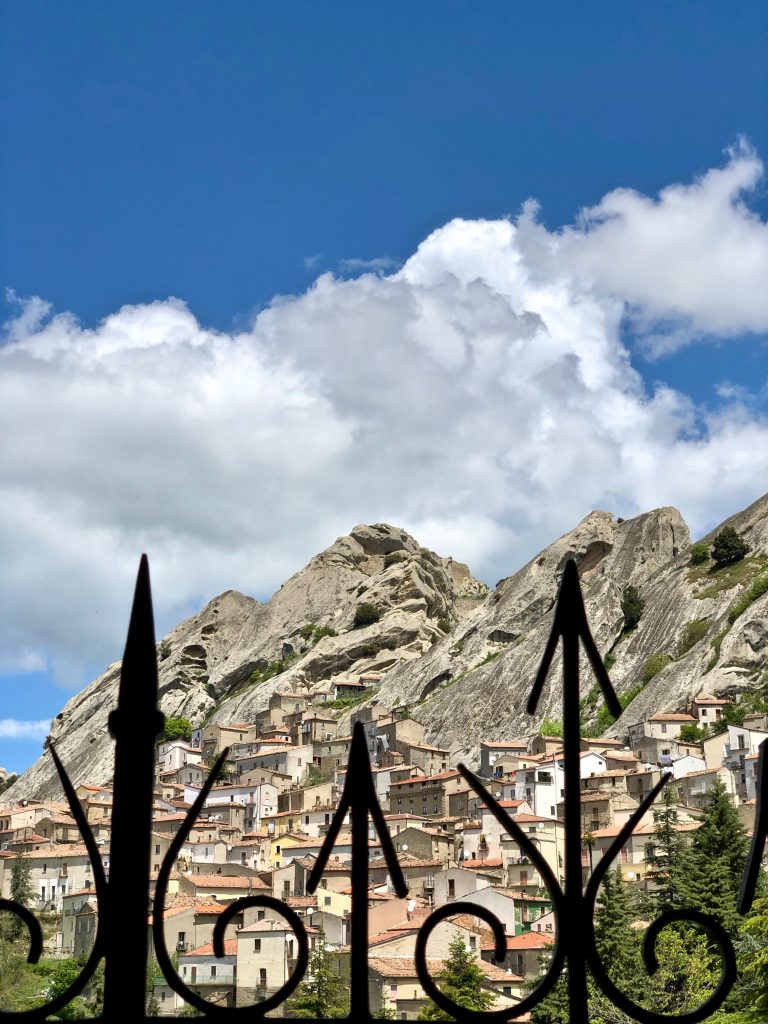
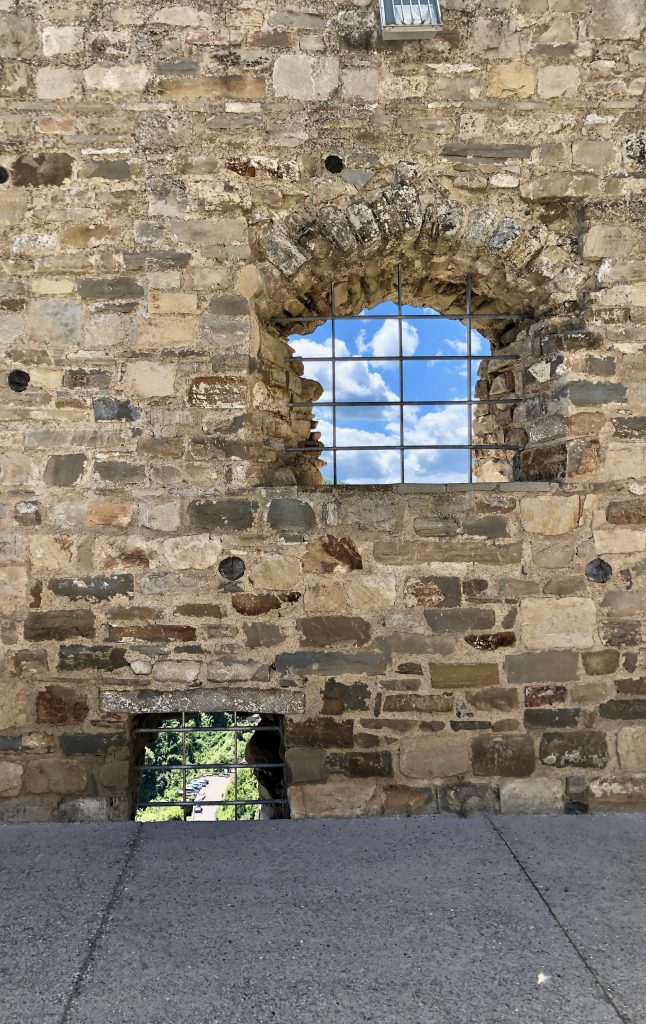
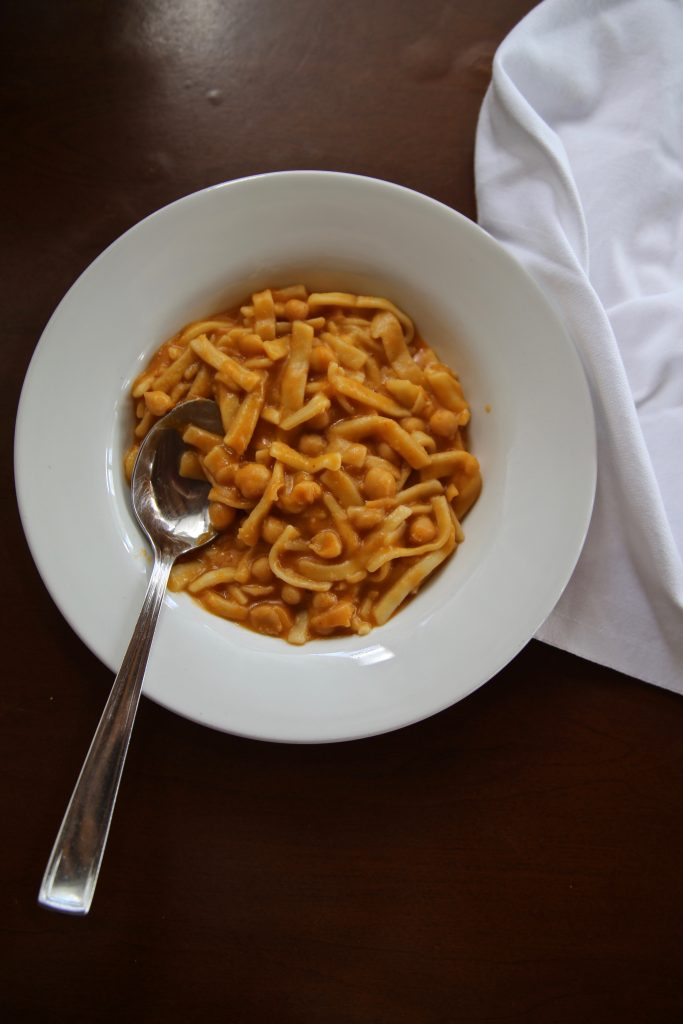

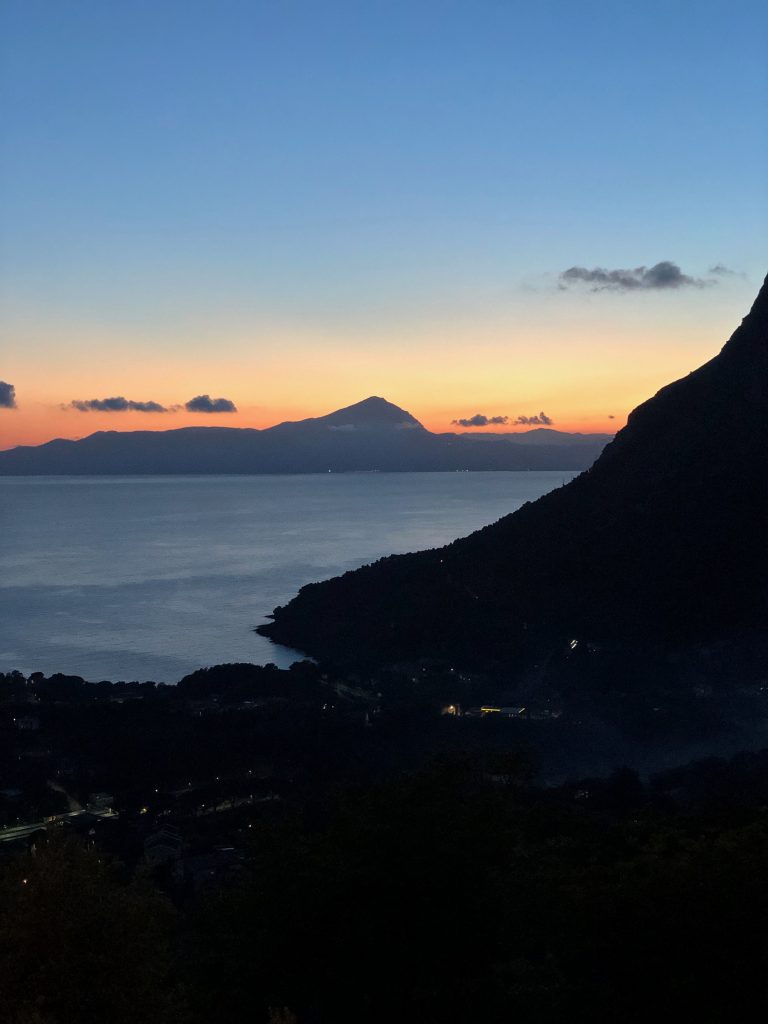
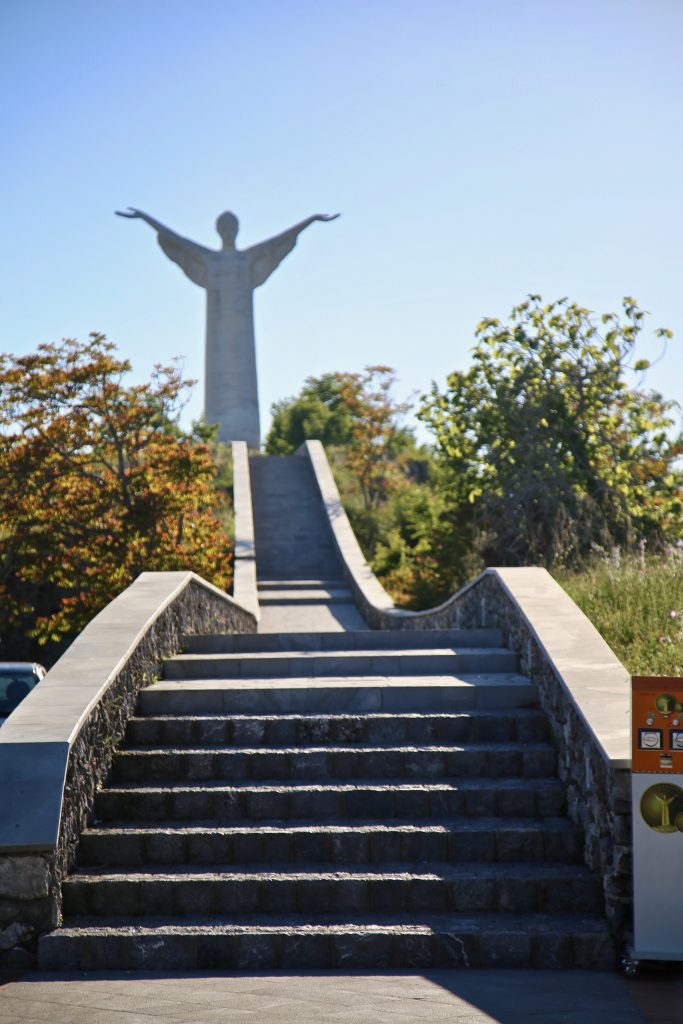
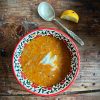


I enjoyed this taleif your trip… So much so , I’d like to go there myself…..
I love your food blogs and you are so generous sharing recipes. Ive followed you for a number of years now but never plucked up the courage to come to a supper party..Maybe this year?
I hope you do Christine! Thanks so much for commenting.